
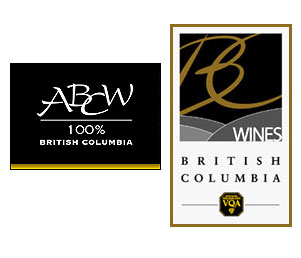
British Columbia (Provincial Appellation)
British Columbia moves to adopt national wine standards
A decade of controversy over the adoption of wine standards is coming to an end after the provincial government’s decision to legislate what will be called the British Columbia Wine Authority.
by
John Schreiner
March 17, 2005
The new authority will begin operating on August 1, 2005, administering a new “Wines of Marked Quality” program. All grape wineries will be required to register annually and all wines of “marked quality” must be certified by the Authority.
Those wines will include all British Columbia VQA wines – although not all wines of marked quality will be required to be VQA until the year 2020. This arrangement is a compromise designed to heal the division between those B.C. wineries supporting VQA, and those that don’t.
The new Wine Authority takes over the responsibilities of the British Columbia Wine Institute (BCWI) for governing wine standards. BCWI will concern itself primarily with the promotion of British Columbia wine.
BCWI was launched in 1990 to run the VQA program as well as to promote the wines. VQA – Vintners Quality Alliance – had been started a few years earlier in Ontario and BCWI secured the right from the Ontario wine industry to replicate the VQA program in B.C.
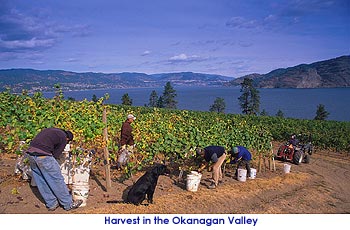 Initially, virtually every winery in B.C. belonged to BCWI (the exceptions were neither commercially significant nor especially capable wine producers) and most of the wines made from grapes grown in B.C. went through the VQA tasting panel. Consumers embraced VQA wines. In the fiscal year ended March 31, 1992, the sales of BC VQA wines totalled $6.8 million. That figure rose to $31.3 million by the fiscal year ending March 31, 1996. In the current year, it will be about $100 million.
Initially, virtually every winery in B.C. belonged to BCWI (the exceptions were neither commercially significant nor especially capable wine producers) and most of the wines made from grapes grown in B.C. went through the VQA tasting panel. Consumers embraced VQA wines. In the fiscal year ended March 31, 1992, the sales of BC VQA wines totalled $6.8 million. That figure rose to $31.3 million by the fiscal year ending March 31, 1996. In the current year, it will be about $100 million.
Despite the steady rise in VQA wine sales, the BCWI began to unravel about 1995. Wineries dropped out of BCWI for various reasons. For example, Larch Hills Estate Winery near Salmon Arm was angered when it was denied a highway sign at a time when the Okanagan wineries all had them. Other wineries questioned the objectivity of the VQA tasting panel or believed their own wines were already being made to higher standards. Still others took exception to the BCWI spending money to promote wines in Europe to the apparent benefit of only a few producers.
Matters exploded into litigation about 1998 when VQA authorities in both Ontario and B.C. sought to restrict the use of geographical indicators and terms such as Icewine only to VQA member wineries. Outraged, the non-VQA producers in BC believed they were being pushed around by Ontario.
“VQA Canada members from British Columbia are appointed by VQA Canada and not by the BC wine industry,” complained Kettle Valley winery co-owner Bob Ferguson in one of documents he filed in federal court. “In my opinion, VQA Canada is dominated by a few individuals and is not governed by people who are a representative of those in the wine industry; nor are they duly elected in a democratic manner.”
The litigation ended in a stand-off in 2001. Meanwhile, the dissident wineries in BC in 2000 had formed the Association of Wine Growers of British Columbia. Membership was open to all producers making wine only from grapes grown in BC. Over the past five years, about half of BC’s wineries joined the Association. Some also remained BCWI members but the defections certainly reduced the effectiveness of BCWI. By contrast, every Ontario winery is required to participate in VQA.
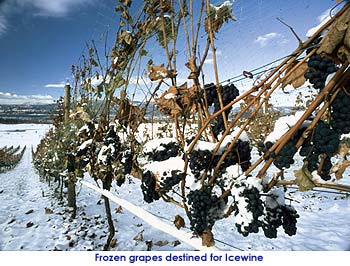 The divisions in the BC wine industry seriously impeded the development of national wine standards. The BC government and the BC industry have been negotiating with Ontario at least since 2002. Enforced wine standards in the major viticulture areas in Canada are required so that Canadian wines can be exported to Europe, and so that the integrity of Canadian wines, notably Icewine, can be defended against fraudulent copies. When the BC industry made little progress, the current BC government finally decided it had to provide the leadership.
The divisions in the BC wine industry seriously impeded the development of national wine standards. The BC government and the BC industry have been negotiating with Ontario at least since 2002. Enforced wine standards in the major viticulture areas in Canada are required so that Canadian wines can be exported to Europe, and so that the integrity of Canadian wines, notably Icewine, can be defended against fraudulent copies. When the BC industry made little progress, the current BC government finally decided it had to provide the leadership.
“There needs to be national standards for wine,” BC Agriculture Minister, John van Dongen, wrote to the industry in 2003, “and we, as a province, need to be a party to those standards in such a way that those wineries who want to export have the maximum opportunity to do so. At the same time, we need to find a way that those wineries who want to focus exclusively on local (regional, provincial and Canadian) markets can do so in a way that is also consistent with the established standards.”
It took two years to get from that statement to the recent announcement of the BC Wine Authority, funded largely by levies on how many tonnes of grapes each winery processes. Today, the BC wine industry is finally on the same page as Ontario regarding national standards.
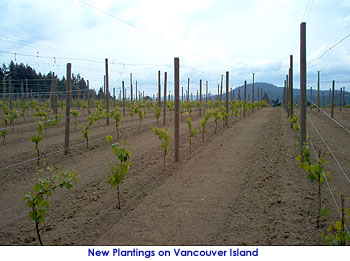 The draft regulations for the Wine Authority were accepted by the BC cabinet in late February. Unless the May 17 election results in a complete change of government, the Authority will take over policing wine quality in the fall.
The draft regulations for the Wine Authority were accepted by the BC cabinet in late February. Unless the May 17 election results in a complete change of government, the Authority will take over policing wine quality in the fall.
All wineries must be registered. Every wine desiring the “marked quality” designation also needs to be registered, with audit-worthy proof that the wines are made from BC grapes and that the wines have gone through basic chemical analysis from a certified laboratory. (Competent winery laboratories may be certified by the Authority.) It is proposed this will cost $25 a wine. Wineries also will be audited, at cost, at least once every three years.
For those who want the VQA approval, wines will be submitted at $100 a wine to a professional tasting panel run by the Wine Authority. Unlike the current tasting panel, the members of the new panel are unlikely to be drawn from industry winemakers. That might silence those who grumble (perhaps on the basis of slim evidence) that the panel can be biased.
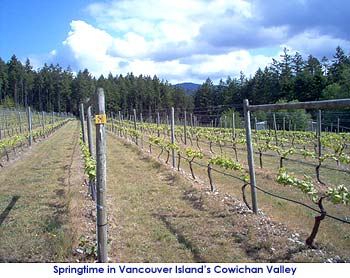 The Wine Authority regulations lay down basic production standards comparable to current VQA rules. They also set out the six approved geographic indicators: British Columbia, Fraser Valley, Okanagan Valley, Similkameen Valley, Vancouver Island, and BC Gulf Islands. The regulations name no sub-appellations but set out the procedure for defining those in the future.
The Wine Authority regulations lay down basic production standards comparable to current VQA rules. They also set out the six approved geographic indicators: British Columbia, Fraser Valley, Okanagan Valley, Similkameen Valley, Vancouver Island, and BC Gulf Islands. The regulations name no sub-appellations but set out the procedure for defining those in the future.
Undoubtedly, there are more shoes to drop. While every producer has to support the Wine Authority, membership will be voluntary for the numerous industry associations, including BCWI, the Association of Wine Growers, the BC Estate Winery Association, the Wine Islands Vintners Association and the Naramata Bench Wineries Association. There might now be some rationalization.
Those wines will include all British Columbia VQA wines – although not all wines of marked quality will be required to be VQA until the year 2020. This arrangement is a compromise designed to heal the division between those B.C. wineries supporting VQA, and those that don’t.
The new Wine Authority takes over the responsibilities of the British Columbia Wine Institute (BCWI) for governing wine standards. BCWI will concern itself primarily with the promotion of British Columbia wine.
BCWI was launched in 1990 to run the VQA program as well as to promote the wines. VQA – Vintners Quality Alliance – had been started a few years earlier in Ontario and BCWI secured the right from the Ontario wine industry to replicate the VQA program in B.C.
 Initially, virtually every winery in B.C. belonged to BCWI (the exceptions were neither commercially significant nor especially capable wine producers) and most of the wines made from grapes grown in B.C. went through the VQA tasting panel. Consumers embraced VQA wines. In the fiscal year ended March 31, 1992, the sales of BC VQA wines totalled $6.8 million. That figure rose to $31.3 million by the fiscal year ending March 31, 1996. In the current year, it will be about $100 million.
Initially, virtually every winery in B.C. belonged to BCWI (the exceptions were neither commercially significant nor especially capable wine producers) and most of the wines made from grapes grown in B.C. went through the VQA tasting panel. Consumers embraced VQA wines. In the fiscal year ended March 31, 1992, the sales of BC VQA wines totalled $6.8 million. That figure rose to $31.3 million by the fiscal year ending March 31, 1996. In the current year, it will be about $100 million.
Despite the steady rise in VQA wine sales, the BCWI began to unravel about 1995. Wineries dropped out of BCWI for various reasons. For example, Larch Hills Estate Winery near Salmon Arm was angered when it was denied a highway sign at a time when the Okanagan wineries all had them. Other wineries questioned the objectivity of the VQA tasting panel or believed their own wines were already being made to higher standards. Still others took exception to the BCWI spending money to promote wines in Europe to the apparent benefit of only a few producers.
Matters exploded into litigation about 1998 when VQA authorities in both Ontario and B.C. sought to restrict the use of geographical indicators and terms such as Icewine only to VQA member wineries. Outraged, the non-VQA producers in BC believed they were being pushed around by Ontario.
“VQA Canada members from British Columbia are appointed by VQA Canada and not by the BC wine industry,” complained Kettle Valley winery co-owner Bob Ferguson in one of documents he filed in federal court. “In my opinion, VQA Canada is dominated by a few individuals and is not governed by people who are a representative of those in the wine industry; nor are they duly elected in a democratic manner.”
The litigation ended in a stand-off in 2001. Meanwhile, the dissident wineries in BC in 2000 had formed the Association of Wine Growers of British Columbia. Membership was open to all producers making wine only from grapes grown in BC. Over the past five years, about half of BC’s wineries joined the Association. Some also remained BCWI members but the defections certainly reduced the effectiveness of BCWI. By contrast, every Ontario winery is required to participate in VQA.
 The divisions in the BC wine industry seriously impeded the development of national wine standards. The BC government and the BC industry have been negotiating with Ontario at least since 2002. Enforced wine standards in the major viticulture areas in Canada are required so that Canadian wines can be exported to Europe, and so that the integrity of Canadian wines, notably Icewine, can be defended against fraudulent copies. When the BC industry made little progress, the current BC government finally decided it had to provide the leadership.
The divisions in the BC wine industry seriously impeded the development of national wine standards. The BC government and the BC industry have been negotiating with Ontario at least since 2002. Enforced wine standards in the major viticulture areas in Canada are required so that Canadian wines can be exported to Europe, and so that the integrity of Canadian wines, notably Icewine, can be defended against fraudulent copies. When the BC industry made little progress, the current BC government finally decided it had to provide the leadership.
“There needs to be national standards for wine,” BC Agriculture Minister, John van Dongen, wrote to the industry in 2003, “and we, as a province, need to be a party to those standards in such a way that those wineries who want to export have the maximum opportunity to do so. At the same time, we need to find a way that those wineries who want to focus exclusively on local (regional, provincial and Canadian) markets can do so in a way that is also consistent with the established standards.”
It took two years to get from that statement to the recent announcement of the BC Wine Authority, funded largely by levies on how many tonnes of grapes each winery processes. Today, the BC wine industry is finally on the same page as Ontario regarding national standards.
 The draft regulations for the Wine Authority were accepted by the BC cabinet in late February. Unless the May 17 election results in a complete change of government, the Authority will take over policing wine quality in the fall.
The draft regulations for the Wine Authority were accepted by the BC cabinet in late February. Unless the May 17 election results in a complete change of government, the Authority will take over policing wine quality in the fall.
All wineries must be registered. Every wine desiring the “marked quality” designation also needs to be registered, with audit-worthy proof that the wines are made from BC grapes and that the wines have gone through basic chemical analysis from a certified laboratory. (Competent winery laboratories may be certified by the Authority.) It is proposed this will cost $25 a wine. Wineries also will be audited, at cost, at least once every three years.
For those who want the VQA approval, wines will be submitted at $100 a wine to a professional tasting panel run by the Wine Authority. Unlike the current tasting panel, the members of the new panel are unlikely to be drawn from industry winemakers. That might silence those who grumble (perhaps on the basis of slim evidence) that the panel can be biased.
 The Wine Authority regulations lay down basic production standards comparable to current VQA rules. They also set out the six approved geographic indicators: British Columbia, Fraser Valley, Okanagan Valley, Similkameen Valley, Vancouver Island, and BC Gulf Islands. The regulations name no sub-appellations but set out the procedure for defining those in the future.
The Wine Authority regulations lay down basic production standards comparable to current VQA rules. They also set out the six approved geographic indicators: British Columbia, Fraser Valley, Okanagan Valley, Similkameen Valley, Vancouver Island, and BC Gulf Islands. The regulations name no sub-appellations but set out the procedure for defining those in the future.
Undoubtedly, there are more shoes to drop. While every producer has to support the Wine Authority, membership will be voluntary for the numerous industry associations, including BCWI, the Association of Wine Growers, the BC Estate Winery Association, the Wine Islands Vintners Association and the Naramata Bench Wineries Association. There might now be some rationalization.












